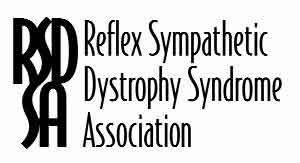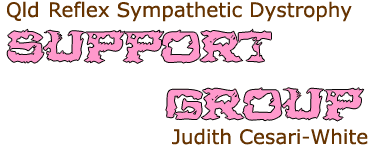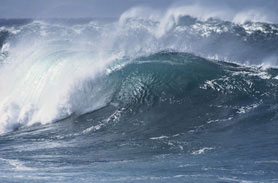|
Diagnosis and Treatment Options
of RSD/CRPS
Srinivasa N. Raja, MD
Director of Pain Research
Johns Hopkins University
School of Medicine
Introduction
Reflex Sympathetic Dystrophy Syndrome (RSD), also known as Complex
Regional Pain Syndrome (CRPS) is a chronic neurologic syndrome characterized
by pain of varying intensity
Early diagnosis and appropriate treatment are essential to avoid
disabling pain
RSD/CRPS is often under-diagnosed and under-treated by the medical
community
What is CRPS
CRPS is a debilitating neurologic syndrome characterized by
Pain and hypersensitivity
Vasomotor skin changes
Functional impairment
Various degrees of trophic change
CRPS generally follows a musculoskeletal trauma
Challenges
Natural course and pathophysiology remain elusive1
Diagnosis made by exclusion of other causes2
Therapies remain controversial3
Under-diagnosed and under-treated
Significant morbidity and loss of quality of life
1.
Jänig W. In: Harden , Baron Janig, eds. Complex regional Pain
Syndrome, Progress in Pain Research and Management. 2001: 3-15.
2. Bogduk N. Current Opinions in Anesthesiology. 2000;14:541-546.
3. Raja SN et al. Anesthesiology. 2002;96:1254-1260.
Terminology: RSD vs CRPS
RSD = traditional term
Complex regional pain syndrome (CRPS) = more comprehensive term
Includes disorders not related to sympathetic nervous system dysfunction
CRPS I = RSD
CRPS II = causalgia (involves nerve injury)
Galer BS et al. In: Loeser, ed. Bonica’s Management of Pain.
2001: 388-411
Name
Change to CRPS
For standardized, reliable diagnostic criteria and decision rules
Allow generalization
Make appropriate treatment selection
Identify reproducible research samples
Epidemiology
Common in younger adults
Mean 41.8 years
Mean age at time of injury 37.7 years
Mean duration of symptoms before pain center evaluation = 30 months
2.3 to 3 times more frequent in females than males1
Usually involves a single limb in the early stage 2
1.
Raja SN et al. Anesthesiology. 2002;96:1254-1260. 2. Galer BS et
al. In: Loeser, ed. Bonica’s Management of Pain. 2001, 388-411.
Clinical Features of CRPS
Presence of an initiating noxious event or a cause of immobilization
Continuing pain
Allodynia: pain from a stimulus that does not normally provoke pain
Hyperalgesia: excessive sensitivity to pain
Pain disproportionate to any inciting event
Stanton-Hicks
M et al. Pain. 1995;63:127-133. Galer BS et al. In: Loeser, ed.
Bonica’s Management of Pain. 2001; 388-411.
Clinical Features (cont’d)
History of edema (swelling), changes in skin blood flow, or abnormal
sweating in the region of pain
Exclusion of medical conditions that would otherwise account for
the degree of pain and dysfunction
Stanton-Hicks
M et al. Pain. 1995;63:127-133. Galer BS et al. In: Loeser, ed.
Bonica’s Management of Pain. 2001: 388-411.
Clinical Aspects of CRPS

|
Sensory Changes
in CRPS
Allodynia
Hyperalgesia Hyperesthesia
Increased sensitivity to a sensory stimulation
Hyperpathia
Abnormally exaggerated subjective response to painful stimuli
|
 |
|
Autonomic
Signs in CRPS
Edema
Color change
Temperature
(cooler or warmer)
Sweating
|
 |
|
Abnormal Sweating

Abnormal Swelling

|
Trophic
Changes
Altered nail growth
Altered hair growth
Skin changes |
 |
| Skin changes |
 |
Psychological
Changes
Fear
Anxiety
Anger
Suffering
Depression
Failure to Cope
Raja
SN et al. Anesthesiology. 2002;96:1254-1260 |
 |
|
|
Clinical Presentation
Pain and sensory changes disproportionate to the injury in magnitude
or duration
Patients should have at least one symptom in each of these categories
and one sign in 2 or more categories
Sensory (hyperesthesia = increased sensitivity to a sensory stimulation)
Vasomotor (temperature or skin abnormalities)
Sudomotor (edema or sweating abnormalities)
Motor (decreased range of movement, weakness, tremor, or neglect)
Checklist for Diagnosis: History
Skin, sensitivity to touch
Skin, sensitivity to cold
Burning pain
Abnormal swelling
Abnormal hair growth
Abnormal nail growth
Abnormal sweating
Abnormal skin color changes
Abnormal skin temperature changes
Limited movement
Checklist for Diagnosis: Examination
Mechanical allodynia
Hyperalgia to single pinprick
Summation to multiple pinprick
Cold allodynia
Abnormal swelling
Abnormal hair growth
Abnormal skin color changes
Abnormal skin temperature
Limited range of movement
Motor neglect
Bogduk
N. Current Opinions in Anesthesiology. 2000;14:541-546
Differential Diagnoses
Diabetic and small-fiber peripheral neuropathies
Entrapment neuropathies
Thoracic outlet syndrome
Discogenic disease
Deep vein thrombosis
Cellulitis
Vascular insufficiency
Lymphedema
Erythromelalgia
Raja
SN et al. Anesthesiology. 2002;96:1254-1260
CRPS Spreads
Patterns of spread
Contiguous spread
Gradual and significant enlargement of the affected area
Independent spread
CRPS appears in a distant, non-contiguous area
Mirror-image spread
Symptoms appear on the opposite side in an area that closely matches
size and location of original
Maleki
J et al. Pain. 2000;88:259-266
Spread of CRPS

A patient with both upper and lower extremity being
affected with RSD/CRPS at different time points about 2 years apart.
Goal and Strategy for Treatment

Treatment
Physiotherapy + pain management + psychological therapies = sequential
progression through the rehabilitation pathway
PT + OT crucial to patient’s progression
Therapist assesses patient’s motivation and helps set goals
Adequate analgesia, encouragement, and education of disease process
Stanton-Hicks
M et al. Pain Practice. 2002;2:1-16.
Rehabilitation: General Steps
Desensitization of the affected region
Mobilization, edema control, and isometric strengthening
Stress loading, isotonic strengthening, range of motion, postural
normalization and aerobic conditioning
Vocational and functional rehabilitation
Stanton-Hicks
M et al. Clin J Pain. 1998;14:155-166
Pharmacologic Pain Management
No “gold standard” treatment for CRPS
Effective therapy has included
Tricyclic antidepressants
IV and topical lidocaine
IV ketamine
Carbamazepine
Topical aspirin
Most drugs used for neuropathic pain are used to treat RSD/CRPS
IV alendronate (bisphosphonate)
Topic dimethyl sulfoxide
Topical clonidine
IV bretylium
IV ketanserin
IV phentolamine
Intranasal calcitonin
Minimally Invasive Intervention
Sympathetic, IV regional, and somatic nerve blocks
Patients with a sympathetic component to their pain (SMP) should
receive nerve blocks
For patients without SMP, a somatic block or epidural infusion may
be indicated to optimize analgesia for PT
Stanton-Hicks
M et al. Pain Practice. 2002;2:1-16
More Invasive Intervention
Tunneled epidural catheters
Neuroaugmentation
Spinal cord stimulation
Intrathecal drug delivery
Stanton-Hicks
M et al. Pain Practice. 2002;2:1-16.
Sympathectomy
Controversial surgical procedure
In carefully selected patients, may result in reduction in pain
severity and disability
Patients with SMP who respond to selective sympathetic blockade
Alternatives
Radiofrequency
Neurolytic techniques
Stanton-Hicks
M et al. Pain Practice. 2002;2:1-16.
Bandyk DF et al. J Vasc Surg. 2002;35:269-277.
Psychotherapy
Essential part of rehabilitation process includes
Cognitive behavioral therapy
Coping skills
Stress management
Relaxation techniques
Imagery
Self-hypnosis
Stanton-Hicks
M et al. Pain Practice. 2002;2:1-16
Prognosis
Difficult to predict
Earlier intervention may be more likely to be successful
Some patients experience reduced symptoms or apparently full recovery
Some patients continue to experience significant disability
Raja
SN et al. Anesthesiology. 2002;96:1254-1260.
Conclusions
RSD/CRPS is a chronic neurologic syndrome
Not all patients have the same set of symptoms
Early diagnosis and appropriate treatment is essential
Ideal treatment should be multidisciplinary
Bibliography
Bandyk DF, Johnson BL, Kirkpatrick AF, Novotney ML, Back MR, Schmacht
DC. Surgical sympathectomy for reflex sympathetic dystrophy
syndromes. J Vasc Surg. 2002;35:269-277.
Bogduk N. Complex regional pain syndrome. Current Opinions in
Anesthesiology. 2000;14:541-546
.
Bruehl SP, Harden RN, Galer BS, et al. External validation of
IASP diagnostic criteria for complex regional pain syndrome and
proposed research diagnostic criteria. Internal Association for
the Study of Pain. Pain. 1999;81:147-154.
Galer BS, Schwartz L, Allen RJ. In: Loeser, ed. Bonica’s
Management of Pain. 2001: 388-411.
Harden RN, Bruehl SP, Galer BS, et al. Complex regional pain
syndrome: are the IASP diagnostic criteria valid and sufficiently
comprehensive? Pain. 1999;83:211-219.
Jänig W. CRPS-I and CRPS-II: A strategic view, In: Harden
, Baron Jänig, eds. Complex regional Pain Syndrome, Progress
in Pain Research and Management. 2001: 3-15.
Kingery WS. Pain. A critical review of controlled clinical trials
for peripheral neuropathic pain and complex regional pain syndromes.
1997;73:123-139.
Maleki J, LeBel AA, Bennett GJ, Shwartzman RJ. Patterns of spread
in complex regional pain syndrome, type I (reflex sympathetic dystrophy).
Pain. 2000;88:259-266.
Raja SN , Grabow TS. Complex regional pain syndrome I (Reflex
Sympathetic Dystrophy) Anesthesiology. 2002;96:1254-1260.
Stanton-Hicks M, Burton AW, Bruehl SP, et al. An updated interdisciplinary
clinical pathway for CRPS: Report of an expert panel. Pain Practice.
2002;2:1-16.
Stanton-Hicks M, Jänig W, Hassenbusch S, et al. Reflex
sympathetic dystrophy: changing concepts and taxonomy. Pain. 1995;63:127-133
Stanton-Hicks M, Baron R, Boas R, et al. Complex Regional Pain
Syndrome: guidelines for therapy. Clin J Pain. 1998;14:155-166.
|

PO Box 502
Milford, CT 06460
(877) 662-7737
|
Promotes public and professional awareness
of RSD and educates patients, their families, friends, insurance
and healthcare providers on the disabling pain it causes
Encourages those with RSD/CRPS to offer each other emotional
support within affiliate groups
Raises funds for research |
|
Letter to those who do NOT have RSD
Having RSD means many things change, and a lot of them are invisible.
Unlike having cancer or being hurt in an accident most people do
not know even a little about RSD and of those who think they do,
many are actually misinformed.
In the spirit of informing those who wish to understand, these are
the things I would like you to understand about me before you judge
me:
-Please understand that being in pain doesn't mean that I am not
still a human being. I have to spend most of my days in incredible
pain and exhaustion and if you visit I probably don't seem like
much fun to be with. But, I'm still me stuck inside this body. I
still worry about school and work and my family and friends and
most of the time I'd still like to hear you talk about yours too.
-Please understand the difference between "happy" and
"healthy". when you've got the flu, you probably feel
miserable with it, but I've been in pain for years. I can't be miserable
all the time and, in fact, I work hard at not being miserable. So
if you're talking to me and I sound happy, it means I am happy.
That's it......it doesn't mean that I am not in a lot of pain, or
extremely tired, or that I am getting better or any of those things.
Please don't say "oh, you sound better!" I am not sounding
better. I am sounding happy. If you want to comment on that, you're
welcome to do so.
-Please understand that being able to stand up for 10 minutes doesn't
necessarily mean that I can stand for 20 minutes or an hour. And,
just because I managed to stand up for 30 minutes yesterday doesn't
mean I can do the same today. With many diseases you're either paralyzed
or you can move: with this one it gets more confusing.
-Please repeat the above paragraph substituting "sitting",
"walking", "thinking", "being sociable"
and so on.....it applies to everything.
That's what RSD does to you.
-Please understand that RSD is variable. Its quite possible (for
me its common) that one day I'll be able to walk to the park and
back, while the next I'll have trouble getting to the kitchen. Please
don't attack me when I'm hurting by saying "but you did it
before!" If you want me to do something then ask if I can.
In a similar vein, I may need to cancel an invitation at the last
minute. If that happens, please do not take it personally.
-Please understand that "getting out and doing things"
does not make me feel better, and can often make me seriously worse.
Telling me that I need a treadmill, or that I just need to lose
(or gain) weight, get this exercise machine, join this gym, or try
these classes, may frustrate me to tears and is NOT correct. I am
working with my doctor and physical therapist and am already doing
the diet and exercise I am supposed to do. Another statement that
hurts is "you just need to push yourself more, work harder..."
RSD deals with nerves and circulation, and our bodies don't repair
themselves the way yours do; pushing myself can do far more damage
than good and could result in recovery time of days, weeks or months.
-Please understand that RSD may cause secondary depression (wouldn't
you get depressed if you were hurting for months and years on end?)
but it is NOT created by depression.
-Please understand that if I say I have to sit down/lie down/take
pills now, I have to do it RIGHT NOW--it can't be put off or forgotten
just because I am out for the day (or whatever). RSD does not forgive.
-Please understand that I don't want you to suggest a cure to me.
Its not because I don't appreciate the thought and its not because
I don't want to get well. Its because I have had almost every one
of my friends suggest one at some point. At first, I tried them
all, but then I realized I was making myself sicker, not better.
If there were something that cured, or even helped, all people with
RSD would know about it. This is not a drug company conspiracy;
there is world wide networking (both on and off the Internet) among
people with RSD, and if something worked we would KNOW. If, after
reading this, you still want to suggest a cure, then do it, but
please don't expect me to rush right out and try it. I'll take what
you say and discuss it with my doctor.
In many ways I depend on you -- people who are not in pain. I need
you to visit me when I am in too much pain to go out. Sometimes
I may need you to help me with the shopping or the cooking. I may
need you to take me to the doctor or the physical therapist. You're
my link to the outside world.
And as much as possible, I need you to understand me.
Sincerely,
Tom Barnes (TomRSDMdSupport@aol.com)
Director
Maryland RSD & Pain Support Network
PO Box 1397
Abingdon, MD 21009
|
| |
|












